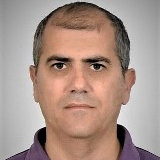New Perspectives for the Monitoring and Early Detection of Geohazards
A special issue of Land (ISSN 2073-445X). This special issue belongs to the section "Land – Observation and Monitoring".
Deadline for manuscript submissions: closed (30 November 2023) | Viewed by 6332
Special Issue Editors
Interests: geotechnical investigations; soil and coastal erosion modelling; rock mechanics; landslide monitoring; design of early-warning systems; land use planning
Interests: geohazard and risk assessment; landslide susceptibility assessment; slope stability; rock engineering systems; artificial intelligence and data mining techniques in geotechnics; monitoring of ground deformation
Special Issues, Collections and Topics in MDPI journals
Interests: tunnelling; rockfall analysis; geohazards correlated to natural gas pipelines; dam foundation; rock mass structural analysis; landslide hazard and stability analysis and monitoring
Special Issues, Collections and Topics in MDPI journals
Interests: geohazard monitoring and modeling (landslides, land subsidence, erosion, floods); geotechnical engineering; engineering geology; computational geotechnical engineering; remote sensing data interpretation; natural hazards under climate change impacts; monitoring and protection of monuments
Special Issues, Collections and Topics in MDPI journals
Special Issue Information
Dear Colleagues,
Geological hazards are the results of natural, active geologic processes. They indicate geomorphological, geological, environmental processes and phenomena that are potentially dangerous or pose a threat to people, infrastructures, and the environment. There are several types of geohazards, natural or human-induced, and all of them have the potential to be disastrous for the natural and built environment, or may be occurring naturally in remote areas with no associated risk. Geohazards can develop quickly in response to the processes that drive them, or may evolve over the course of tens, hundreds, or thousands of years to develop to a point where they pose a threat to the affected communities and the natural environment. Their manifestation is an indication of the continuous dynamic evolution of Earth, and lately because of the climate emergency the frequency has been higher and the magnitude and consequences more severe. Geohazards include volcanic eruptions, earthquakes, landslides, mudslides, debris flows, rockfalls, avalanches, glacial surges and outburst floods, liquefaction, tsunamis, sinkholes and subsidence and other land collapses due to thawing permafrost, which can now be monitored with a greater efficiency due to the rapid development of ground-based, airborne and satellite Earth observation methods.
The goal of the proposed Special Issue is to present recent developments on the monitoring and early detection of geohazards, with emphasis on any type of ground movement or deformation. Towards this aim, research articles and critical problems associated with field implementation, monitoring, and early warning systems will be presented and thoroughly discussed.
We welcome works from interdisciplinary fields, which are essential for the development of new methods of monitoring and detecting any types of hazards. The manuscripts may be in the form of research articles, case studies, modelling, and reviews from anywhere in the world. More specifically, we are interested in contributions related to:
- Advanced site investigation techniques for geohazards;
- Monitoring of ground and earth movements;
- Infrastructure monitoring related with ground failure;
- Analysis and mitigation of geohazards;
- Recent advances in the early detection of geohazards;
- New challenges in landslide and rock fall monitoring and mitigation.
Dr. Nikolaos Depountis
Dr. Maria Ferentinou
Dr. Vassilis Marinos
Prof. Dr. Constantinos Loupasakis
Guest Editors
Manuscript Submission Information
Manuscripts should be submitted online at www.mdpi.com by registering and logging in to this website. Once you are registered, click here to go to the submission form. Manuscripts can be submitted until the deadline. All submissions that pass pre-check are peer-reviewed. Accepted papers will be published continuously in the journal (as soon as accepted) and will be listed together on the special issue website. Research articles, review articles as well as short communications are invited. For planned papers, a title and short abstract (about 100 words) can be sent to the Editorial Office for announcement on this website.
Submitted manuscripts should not have been published previously, nor be under consideration for publication elsewhere (except conference proceedings papers). All manuscripts are thoroughly refereed through a single-blind peer-review process. A guide for authors and other relevant information for submission of manuscripts is available on the Instructions for Authors page. Land is an international peer-reviewed open access monthly journal published by MDPI.
Please visit the Instructions for Authors page before submitting a manuscript. The Article Processing Charge (APC) for publication in this open access journal is 2600 CHF (Swiss Francs). Submitted papers should be well formatted and use good English. Authors may use MDPI's English editing service prior to publication or during author revisions.
Keywords
- landslides
- geohazards
- liquefaction
- monitoring
- early warning
- mitigation
- land subsidence
- tsunamis
- remote sensing
- debris flow
- ground failure








